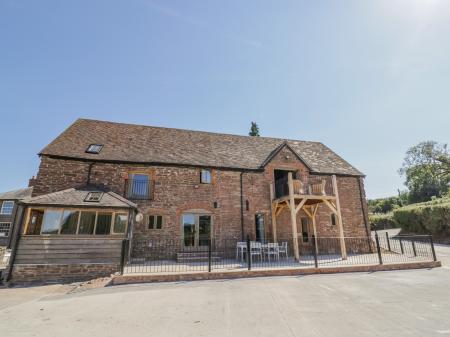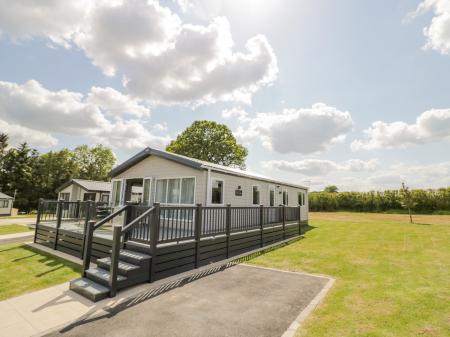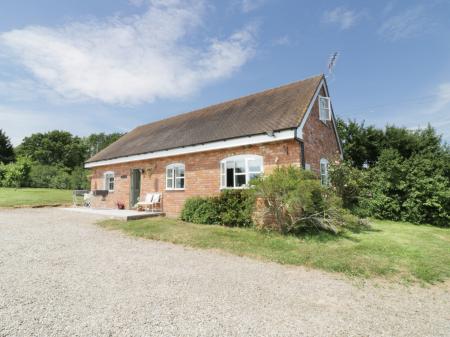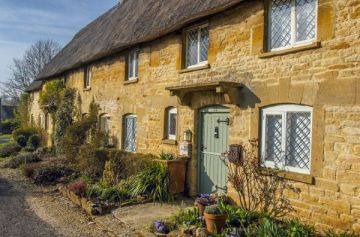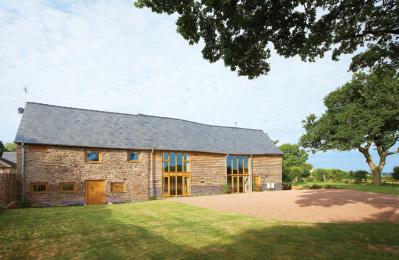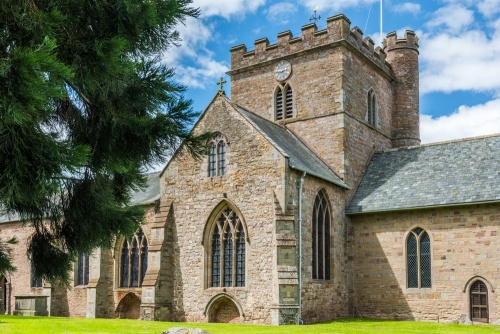
The nave, chancel, and transepts all date to 1175, and vestiges of Norman stonework remain in the base of the central tower, the transept walls, and the west wall. A north aisle was added around 1200, and a century later the chancel was enlarged.
The altar table dates to the 16th century, but it is not original; it was brought here from Hereford Cathedral. At the west end stands the font, which dates to at least the Norman rebuilding of the Saxon church. The font is carved with chevrons and geometric patterns resembling joined spirals.

There are a surprising number of 14th-century tomb recesses, though none of the effigies remains. The pulpit dates to 1883 and is made with pieces of wood from an earlier three-decker pulpit.
Bromyard Bushel
In the north-west corner of the church is the official Bromyard 'Bushel Measure' of 1670, a cast-iron bowl made as a standard for local merchants to measure their goods against. After the Bromyard Bushel fell out of official use it was used as a water butt in a local garden, then as a container to hold logs for a fire. It was donated to the church in 1936.

The Avenbury Knight
Tucked behind a bench at the west end of the north aisle, near the Bromyard Bushel, is a 13th-century stone effigy of a knight, brought here from Avenbury, a mile away when the parish church there fell out of regular use. The life-sized effigy of an unknown knight in armour is incised into the surface of the stone.

Deacon's Synchronological Chart
On the west wall of the north aisle is a copy of a pictorial timeline with maps of the world's great civilisations, drawn up by Professor Edward Hull and published in 1890. The 7-metre long chart chronicles the history of humanity from Adam and Eve to Queen Victoria.
The church exterior is perhaps most notable for the unusual stair turret, which climbs up one angle of the central tower, and actually rises above the tower parapets.
Visiting Bromyard Church
I found St Peter's church a delight to visit, even on a drizzly summer's day. The interior is full of interesting surprises, including all those empty tomb niches. It took me quite some time to find the incised grave slab of the night, but eventually, I discovered it tucked away behind pews at the extreme north-west corner of the church.
It is worth wandering around the exterior of the church to take in not only the carved south door but the interesting blocked north door as well, which features further Norman carved capitals. St Peter's is normally kept open to encourage visitors (other churches please take note!)









 We've 'tagged' this attraction information to help you find related historic attractions and learn more about major time periods mentioned.
We've 'tagged' this attraction information to help you find related historic attractions and learn more about major time periods mentioned.